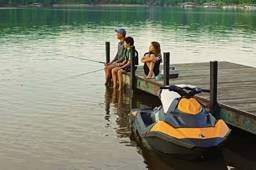– Brad Lindberg, Grand Rapids, Mich.
A: Unfortunately, besides Michigan, the emerald ash borer (EAB) has now been found in the following states: New York, Pennsylvania, Maryland, Virginia, West Virginia, Ohio, Illinois, Indiana, Wisconsin, Minnesota, Iowa, Kentucky, Tennessee and Missouri. In addition, the invasion of this pest is being described by some as an “international problem,” as it has become prevalent in parts of Canada too.
On its own, an EAB infestation would move quite slowly, so for these pests to spread to so many states so quickly, it took a lot of help.
EAB’s biggest helpers are people who transport firewood. While states are doing their best to educate their constituents on the dangers of transporting wood, this is how the disease is most easily and quickly spread. So keep this important rule in mind: “Burn safe where you are.”
What exactly does that mean?
According to the folks at the Don’t Move Firewood website:
• Buy [or harvest] firewood near where you will burn it – that means the wood was cut within 50 miles of where you’ll have your fire.
• Wood that looks clean and healthy can still have tiny insect eggs (or microscopic fungi spores, etc.) that will start a new and deadly infestation. Always leave it at home, even if you think the firewood looks fine.
• Aged or seasoned wood is still not safe. Just because it is dry doesn’t mean that bugs can’t crawl onto it.
• If you already moved firewood, and you now know you need to dispose of it safely, burn it soon and completely. Make sure to rake the storage area carefully and also burn the debris. Then next time, buy or harvest locally.
• Tell your friends not to bring wood with them – everyone needs to know that they should not move firewood.
Since 2002, when the EAB was only found in two areas – in Michigan and Canada – the infestation has popped up in 14 other states.
So are any states safe? If they don’t have ash trees, yes. Otherwise, one DNR official likens the problem to Dutch elm disease. While much research has been done on EAB identification, how quickly it spreads, and which natural predators, insecticides and pesticides could be used to combat it, the fact is that the EAB is here for good.
What the state of Michigan is trying to do – since complete eradication is impossible – is to get homeowners, cabin owners, business owners and local governments involved to start tackling the problem while they have the resources to deal with the EAB. This is a focus in Michigan’s Upper Peninsula, where the problem isn’t yet widespread.
Beyond stopping the transport of the insect, other possible measures include treating trees to protect them from the EAB before it comes – and even cutting down ash trees and replacing them with different tree species.
The more detection we have – from individuals and communities – the more effectively the spread can be stopped. What should you do if you suspect you have an infested ash tree? Contact your county extension office or the nearest department of agriculture office. You may also contact the USDA Emerald Ash Borer Hotline toll-free: (866) 322-4512.
READER RESOURCES:
• Don’t Move Firewood, www.dontmovefirewood.org
• Emerald Ash Borer, www.emeraldashborer.info









